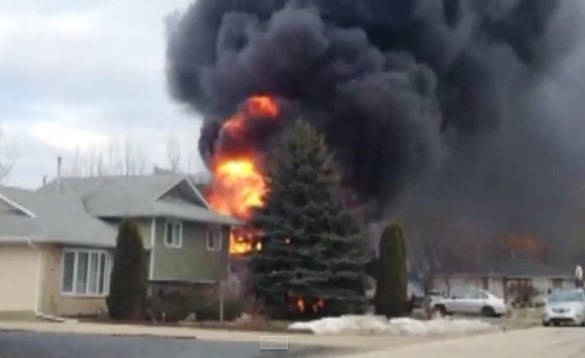Read NIOSH report into deadly West, TX fire & explosion
NIOSH has released its report into the deadly West, Texas ammonium nitrate explosion from April 17, 2013. Below is the Executive Summary
On April 17, 2013, 10 emergency first responders (ranging in age from 26 to 52 and all male) were killed when a burning fertilizer plant containing an estimated 40 to 60 tons of ammonium nitrate exploded just outside the city limits. The explosion occurred less than 20 minutes after the emergency responders arrived on-scene. The victims included five volunteer firefighters with the city’s volunteer fire department, and four volunteer firefighters from three neighboringvolunteer fire departments who were attending an EMS class in the city. One off-duty career fire captain and two civilians who responded to offer assistance to the volunteer fire department were also killed by the explosion. The victims were among a number of first responders engaged in fire suppression and support activities and were in close proximity to the burning structure when the explosion occurred. Five other volunteer firefighters with the city’s fire department were injured. The two civilians were providing non-suppression support to the fire department when they were killed by the blast. Three civilians living nearby also died as the result of the blast.

Contributing Factors:
- Non-recognition of the hazards associated with ammonium nitrate
- Limited preincident planning of commercial facility
- Fire quickly spread to an un-controllable size
- Approximately 40-60 tons of solid ammonium nitrate unexpectedly detonated
- Responders working within blast radius at time of explosion
- Large non-sprinklered, wood construction, commercial structure.
Key Recommendations:
- Fire departments should conduct pre-incident planning inspections of buildings within their jurisdiction to facilitate development of safe fireground strategies and tactics, especially forhigh hazard / high risk structures and occupancies
- Fire departments should have a written risk management plan, use risk management principles at all structure fires and especially at incidents involving high risk hazards
- Fire departments should develop, implement and enforce a written Incident Management System to be followed at all emergency incident operations
- Fire departments should ensure that fire fighters wear a full array of turnout clothing and personal protective equipment appropriate for the assigned tasks
- Fire departments should ensure that fire fighters are trained to standards that meet or exceed NFPA 1001 Standard for Fire Fighter Professional Qualifications.
Additionally, governing agencies (federal, state, regional, and local municipalities) should:
- Consider requiring automatic sprinkler systems, performing regular fire inspections, and other types of active fire prevention methods in industrial facilities, especially those with high risk /high hazard inventory
- Consider following the most current safe handling procedures for ammonium nitrate fertilizer storage and handling.






